What is (Gold Cup) Golden Cup Criterion? Detailed explanation of the proportion of gold gouache in hand-brewed coffee
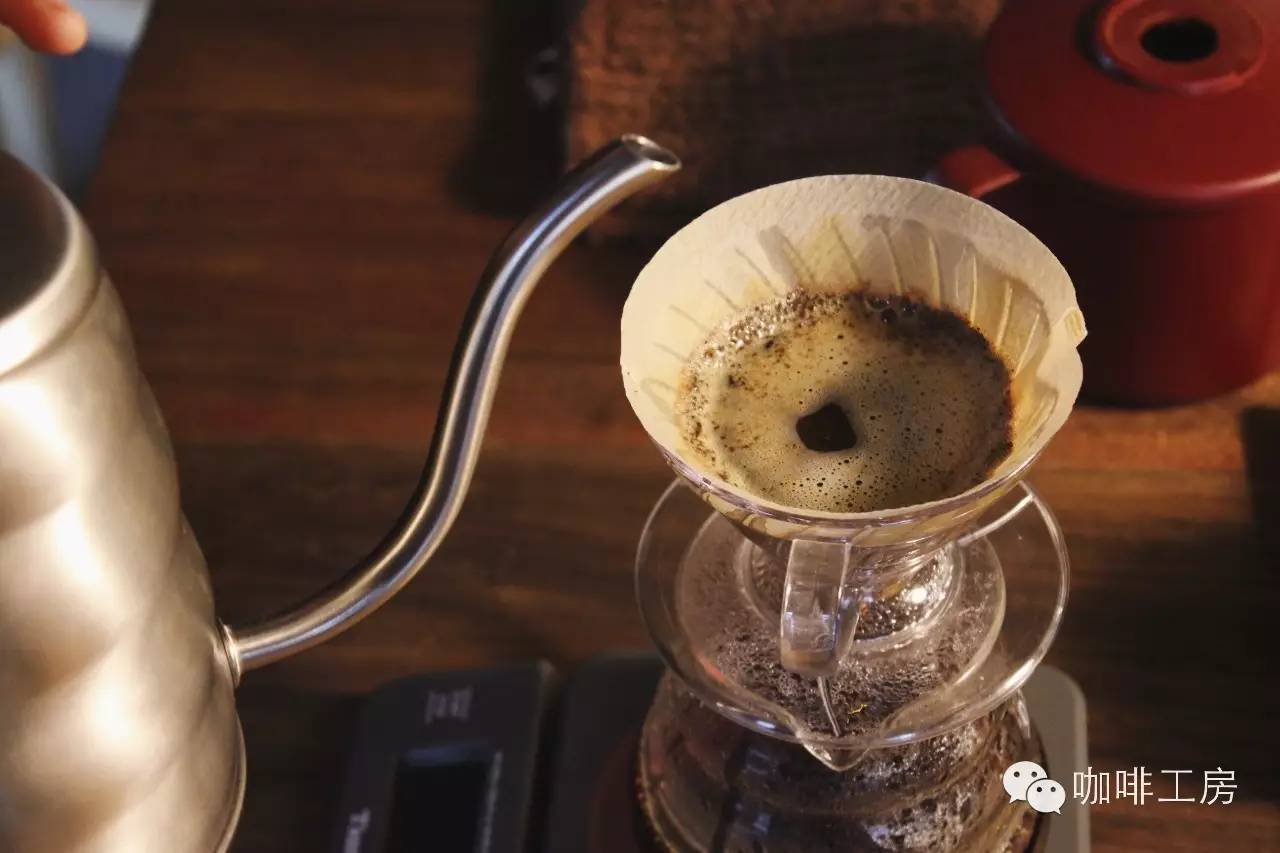
The proportion of SCAA fine cup coffee defined by the Gold Cup Fine Coffee Association of the United States and the scae European Fine Coffee Association must be about 20% of the coffee extraction rate, while the TDS is about 1.1% to 1.3%.
For Drip Filter drip brewing, how to extract the best coffee flavor is controlled by two variables: the extract of coffee powder and the concentration in a cup of coffee. As early as 1960, the so-called "Coffee Gold Cup" golden cup caffeine defined Gold Cup Standard according to SCAE (European Coffee Association): "1000ml water, 50g 60g coffee powder, 92 °C ~ 96 °C hot water to brew coffee." The coffee is brewed at the "bull's-eye" position of the optimum extraction rate (Extraction) and concentration (Strength Concentration), that is, "Gold Cup".
First of all, each coffee can be extracted, the maximum is about 30% (that is, 70% of xylem cannot be extracted), that is, 10g coffee powder has up to 3G coffee soluble extract, while a cup of delicious coffee, the best extraction rate of coffee, that is, 60% 70% of the maximum soluble matter of 30% coffee is the most suitable extraction, which is less than 60% (less than 18%). The coffee flavor will show incomplete flavor. On the other hand, if the extraction rate is more than 70% (the extraction rate is more than 22%), the coffee will be overextracted and the coffee will show bitter, spicy and bad taste.
Therefore, the best extraction rate of coffee is 18%-22%.
This 18% 22% 30% * (60% 70%), that is, the maximum extractable rate of coffee is 30%. Extraction of 6% 70% is the best flavor of coffee. Why don't I write 18% 22% directly, while around 60% 70% of 30%? when we are brewing a cup of coffee, we can imagine how to extract the best flavor of 60% from the maximum extract of coffee. In other words, 10 g coffee powder can extract up to 30% (3G) of coffee soluble matter, but we expect the best extract 18%-22% (1.8-2.2 g).
In addition, how much hot water these extracts will dissolve in, this is the coffee concentration, the optimum coffee concentration is between 1.0 and 1.5%, less than 1.0% light and tasteless, it is better to drink boiled water, if the coffee concentration is too strong more than 1.5% (for dripping coffee), it's not a good taste. The best Gold Cup concentration of dripping coffee is 1.2%-1.45%. Too light or too strong coffee concentration is not good taste. American flavor: coffee with a relatively light concentration, so the TDS of a cup of American coffee is about 1.2-1.3%. European flavor: generally speaking, the concentration of European coffee is a little stronger, so the TDS of a cup of European coffee is about 1.3 to 1.45%.
Therefore, SCAE (European Fine Coffee Association) defines the target position of the standard Gold Cup, which is related to the extraction rate and concentration, that is, the amount of coffee powder is as follows:
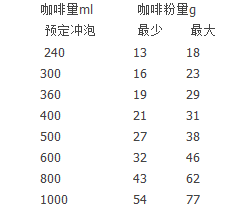
Determine the amount of coffee to be brewed and set the upper and lower limits of coffee powder from the control table, how to reach the best extraction rate from 0: 30% to 18: 22%, and the brewing concentration of coffee is just at 1.2%-1.45%, just like how to throw a good ball. After brewing a cup of Gold Cup coffee, the above basic powder and brewing amount are determined, whether it can reach the best extraction rate of 18%-22%, while the concentration falls at 1.2%-1.45%, which involves the problem of extraction rate, coffee grinding thickness, water temperature, filter medium (affecting water retention time). Wait for mutual cause.
According to SCAE, the controlling factors of making a good cup of coffee include the following five items; no matter how you brew coffee, these five principles must be mastered.
Master extraction time Contact time: apply various brewing methods, in order to extract 180.22% extraction rate within the better extraction time, it is important to control the grinding degree and water temperature of coffee.
It is necessary to master the water temperature from Temperature of the water:92 °C to 96 °C. too high or too low initial water temperature may not be appropriate.
Disturbance of coffee powder Turbulence in the process of brewing: disturbance is to get the proper extraction rate, such as plug air stirring, hand flushing water column flushing strength and so on are all necessary to achieve the extraction.
Pre-soaked moisturizing coffee powder Wettability: hand-made, espresso, American style has the same wetting stage before brewing, this stage wetting water is per gram of coffee powder, 2ml water pre-soaking, soaking time is about 30sec. Of course, the roasting state of coffee beans has different pre-soaking and wetting states, and this part of the hand washing can be well controlled.
Uniform brewing Uniform Dispersion: the brewing process allows the water to pass evenly through each coffee powder, while maintaining the same water temperature from the beginning to the end. Water extraction is important. For example, espresso emphasizes the uniform temperature and pressure of the brewing water, and this is the case with a stable water column by hand.
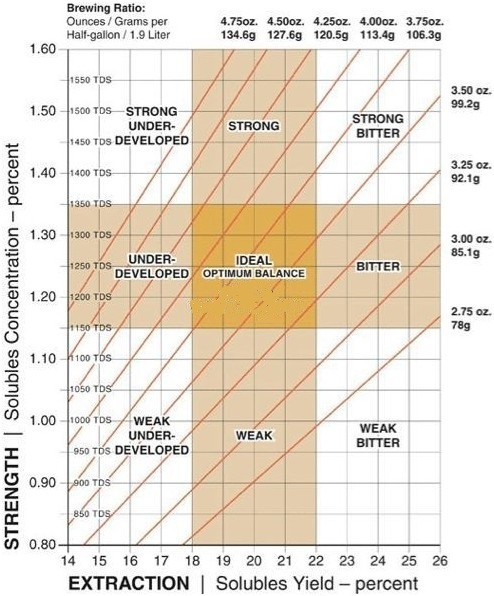
Coffee brewing method
French press French pressure
Percolator mocha pot
Drip Filter trickle filtration
Syphon plug siphon
Pressurised Infusion (Espresso) Italian concentration
As for the grinding thickness of coffee powder:
French pressure: each coffee is ground into 100,300 coffee powders, about 0.7mm powder in diameter, that is, about the size of No. 2 granulated sugar.
Filter: each coffee is ground into 500,800 coffee powder, about diameter 0.5mm powder, that is, about the size of coffee with sugar particles.
Saifeng: each coffee is ground into 1000 to 3000 coffee powders, about 0.35mm powder in diameter, that is, about the size of food refined salt particles.
Espresson: each coffee is ground into 3500 coffee powders, about the diameter of 0.05mm powder, that is, about the size of flour particles.
SCAA standard cup timing coffee powder grinding, 70: 75% through the standard sieve # 20 (0.85mm) uniformity, about a little thicker than the French press.
In addition, SCAE provides the concept of coffee brewing process and brewing time of different grinding thickness:
1. Wetting: at this time, put hot water into the coffee powder to wet the coffee, let the coffee extract dissolve, the amount of water infiltration is about twice the amount of coffee powder, and the infiltration time is about 30sce.
two。 Brewing stage Water Cycle: at this time, because the coffee powder thickness has different time to let the water contact with the coffee powder, and dissolve the coffee extract.
a. French pressing: the powder is coarse, about infiltrating 3~5min
b. Dripping follicle type: the cooking process is about 1~3min
C.Syphon: the cooking process is about 40~60sec
D.espresso: extraction of 30cc espresso in 30 seconds
3. The latter part of the extraction: at this time, the coffee has extracted more than 50% of the extractable matter, that is, 60% to 70% of the coffee soluble extract is extracted for the most suitable extraction and adjust the amount of water to reach the optimum coffee concentration between 1.0% and 1.5%.
4. Coffee grounds after extraction: the water content in the coffee grounds is about 2 times that of the original coffee powder (hand-brewed type).
Weight reference of some coffee pounds
1. Coffee beans: about 60.7 for 1g
2.Hario Syphon measuring spoon: a flat spoon 8x 9g
3.Hario V60 measuring spoon: one flat spoon 14015g
4. Coffee beans (after roasting): 0.38, 0.43 g / cm ^ 3
5. Coffee powder: 0.44, 0.48 g / cm ^ 3
6. A coffee bean with long axis 12mm, short axis 8mm and high 5mm semi-ellipsoid is roasted. It is said that the coffee extraction is related to the surface area. The surface area of the above coffee is 1.4cm ^ 2.
ExtractMOJO issued by TDS and George Howell Coffee company.
ExtractMojo is not a new concept. He just continues the Gold Cup principle of SCAE and makes the theory and practice more convenient. For many people, this set of Gold Cup theory, which was used to examine the quality of follicle coffee in the 1960s, is no stranger. But I must admit that this is the first time that I have seriously understood the principle and brought out the extraction theory again.
Coffee under the Gold Cup framework must maintain an extraction rate of 180.22% (Extraction) and a concentration of about 1.3% TDS (Strength). This is a relationship between the extraction rate and concentration that enables coffee to balance the interpretation of flavor. A coffee bean has about 30% of the soluble substance (the remaining 70% is an insoluble structure, including xylem); the standard extraction rate of Gold Cup is set at 20%; if it is too low, it is due to underextraction (under developed), which leads to flavor imbalance; if it is too high, it is bitterness caused by excessive extraction (Bitter). Strength means that the same soluble substance in the coffee is washed out as a percentage of the coffee solution. The higher the percentage, the stronger the coffee (strong) and vice versa (weak). After understanding these two nouns, we have to try to make coffee to the goal of Extraction=20% and TDS=1.3%.
To achieve this goal of Extraction=20% and TDS=1.3%, Gold Cup has a recommended water-powder ratio, which is about water: coffee= 17:1. The convenience of ExtractMOJO is that you can fix the amount of powder (ground coffee), the amount of water used for cooking (brew water), or the capacity after the cup (desired yield), one of the three parameters, to calculate how much the remaining two should be. For example, if you are going to brew a cup of coffee with a full cup capacity of 240cc today, after you fill in the number in this field, ExtractMOJO will advise you to use 271.69ml 's water with 15.19g of coffee powder (the software will estimate the average water absorption of coffee powder). First fix the water temperature (suppose 205F), take the TDS value of the cup of coffee after brewing, and then input the software to get the landing point of brewing coffee, and then correct it. If the TDS is too high, you can thicken the powder or shorten the extraction time, and vice versa. Follow the data a few more times and you will soon be able to catch your Gold Cup cooking parameters.
Of course, if you want coffee strong (stronger) or light (weaker), you can also adjust the setting. After adjustment, the cooking parameters will run along with it. This is where ExtractMOJO is convenient. You don't need a computer to do the math, just throw the data in, follow the operation, and then correct it according to the actual TDS value. In principle, Extraction=18~22%, TDS=1.3~1.6% is an acceptable range.
Through the experiment, it is found that the brewing of Clover, due to the deviation of the previous concept, uses too much powder, which leads to the increase of TDS to improve the coffee intensity, but ignores the performance of the extraction rate, and makes the coffee fall in the underdeveloped and rich (Strong/Underdeveloped; TDS=1.7,Extraction=11%) range. This cooking method, in addition to a waste of coffee powder, resulting in insufficient extraction rate, but makes the flavor of the producing area is not obvious. It is urgent to use the recommended amount of powder to find new grinding, extraction time, and filter mesh. If business capacity is taken into account, I can't use the four minutes recommended by Gold Cup to make coffee, so I have to fine-tune the grinding to shorten the brewing time. In addition, the coarse filter (70 micorn) is more suitable for cooking Gold Cup than the fine filter (100micorn).
With the help of the software, it took about one night for the extraction parameters to be sorted out, including the brewing settings for medium, light and deep-roasted coffee. Of course, you can ignore the gold cup model, but after testing the golden cup of coffee, I found a few significant differences compared to the coffee I made before:
1. The flavor of the producing area is more obvious.
two。 Sweetness becomes higher
3. Cleanliness becomes higher
4. Throat rhyme lengthening
Then, interestingly, I put the amount of powder in the earbag into the software and boiled it according to the recommended amount of water (200cc), but coincidentally I got a combination of Gold Cup's Extraction=20% and TDS=1.3%, which I didn't expect.
Fifty years after the invention of the principle, it was very sorry for my coffee and guests to seriously explore the principle of gold cup and apply it to the store. I admit that in many cases, taste should be the key to the final decision of the process. However, sometimes the convenience provided to us by the existing scientific principles is ignored, which increases the pain and uncertainty in the process of exploration. This software gives me a new understanding of how Gold Cup works, and because of the convenience of the software, I can adjust the existing process to provide mojocoffee enthusiasts closer to perfect coffee.
Recommended for more exciting content:
Diagram of the proportion of gouache in hand-brewed coffee
The gold cup standard is applied to hand-brewed coffee. What is the powder-to-liquid ratio and water-powder ratio?
Coffee brewing method: the brewing ratio of hand pot coffee refers to the proportion of gouache according to the desired flavor.
Introduction of SCAA American Fine Coffee Association Gold extraction ratio extraction time Flavor Wheel Meter
Important Notice :
前街咖啡 FrontStreet Coffee has moved to new addredd:
FrontStreet Coffee Address: 315,Donghua East Road,GuangZhou
Tel:020 38364473
- Prev
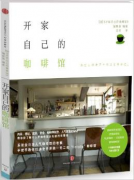
Coffee book recommendation: the store opener documentary "Open your own Cafe"
Book title: open your own Cafe Press: Citic is suitable for people: book introduction to friends who plan to open a shop: this is an old book from 2013, translated from Japanese. Although the information, shops and pictures introduced in the book are all from before 2010, there is still a lot to refer to. What matters is the train of thought. First of all, the coffee shops introduced in the book are all independent.
- Next
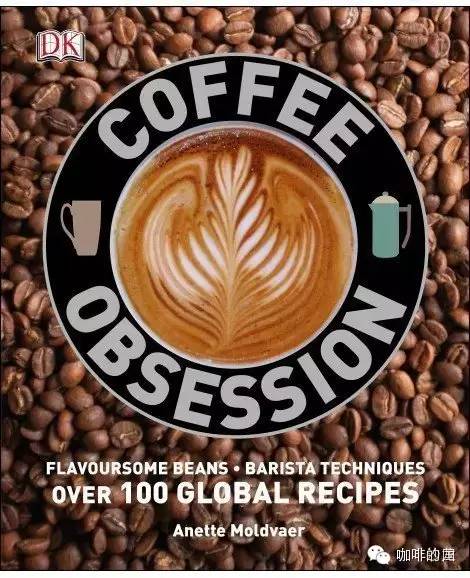
Coffee book recommendation: practical reference book "Coffee Obsession"
Title: CoffeeObsession author: AnetteMoldvaer Buy way: Amazon's 2014 new book. The author has a lot of qualifications for YY, just to mention a few more conspicuous, has been a WBC, COE referee, baked WBC champion beans, has won the World Cup evaluation championship, has a well-known baking company in operation. Concise and to the point, it is the most attractive part of this book. Full book base
Related
- Beginners will see the "Coffee pull flower" guide!
- What is the difference between ice blog purified milk and ordinary milk coffee?
- Why is the Philippines the largest producer of crops in Liberia?
- For coffee extraction, should the fine powder be retained?
- How does extracted espresso fill pressed powder? How much strength does it take to press the powder?
- How to make jasmine cold extract coffee? Is the jasmine + latte good?
- Will this little toy really make the coffee taste better? How does Lily Drip affect coffee extraction?
- Will the action of slapping the filter cup also affect coffee extraction?
- What's the difference between powder-to-water ratio and powder-to-liquid ratio?
- What is the Ethiopian local species? What does it have to do with Heirloom native species?

